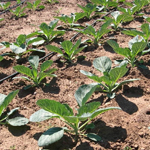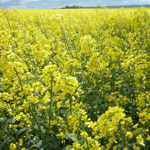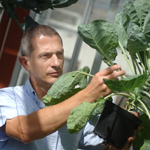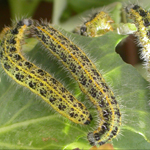Brassica




Brassica vegetables are an important component of a healthy diet. Our aim is to provide solutions to major challenges to brassica production, to enhance yield and quality for the benefit of producers and consumers.
The Genetic Resources Unit and Crop Breeding
- The Genetic Resources Unit seed collection includes cultivated types, landraces and related wild species.
-
The Vegetable Genetic Improvement Network (VeGIN) is a Defra-funded project to bring together research focused on key vegetable crops. The Network encourages collaborations between industry and researchers to address how genetic improvement of crop varieties can contribute to a sustainable increase in food production to meet the twin challenges of food security and climate change. For brassica, the project aims to deliver:
-
- Publicly available mapped C genome Brassica SNPs (Single Nucleotide Polymorphisms) (Guy Barker)
- Genetically fixed diversity sets of domesticated Brassica oleracea and its wild relatives (Graham Teakle)
- QTL (Quantitative trait loci) for Nitrogen content variation in Brassica oleracea (Graham Teakle)
- Sources of resistance to Turnip Mosiac and Turnip Yellows Viruses (John Walsh)
- Sources of resistance to Diamond Back Moth (Rosemary Collier)
-
Integrated Pest and Disease Management
- New agrochemicals and breeding lines are evaluated in laboratory, glasshouse and field trials. Test plants can be infested with insects from the insect rearing unit.
- We have developed forecasts for cabbage root fly and pollen beetle and provide up-to-date information on pest activity in the UK.
- Approaches for control of Sclerotinia disease
